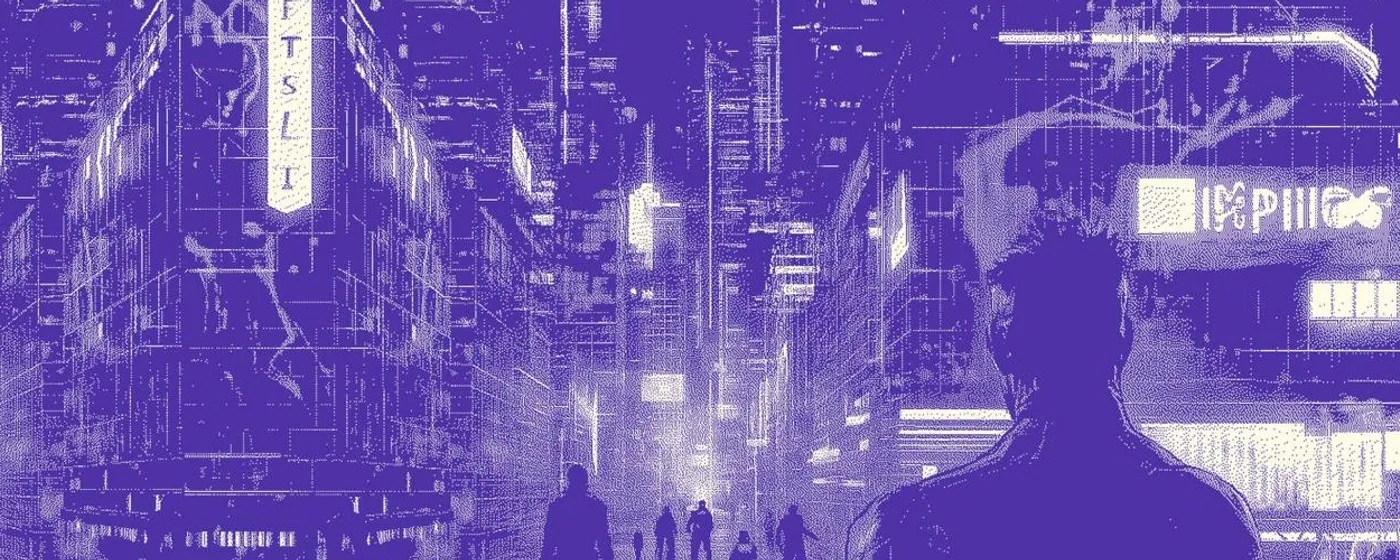
Dreamscapes and AI Architectures
From CIFRA: Step into pixelated dimensions, tread carefully and discover a world where the line between real and virtual is fading fast. From Rebecca Pedrazzi: Technology has opened new artistic frontiers, enabling the exploration of immaterial spaces where pixels and dimensions transform into fluid landscapes and dynamic architectures. From 3D animation to AI, from virtual environments to the metaverse, Art 3.0 embraces new aesthetics, rich in meaningful content. Through immersive, ever-evolving landscapes, expanding sensory and spatial perception to reach the dreamlike imaginary Giuliana Cunéaz - Matter Waves Chrome Pioneer of New Media Art, Giuliana Cunéaz uses digital technology to construct ever-evolving visual landscapes, and explores the transformation of natural elements into visionary architectures. Matter Waves Chrome is a 3D video installation where waves seem to deposit mysterious artifacts in continuous metamorphosis. Nanotechnology and digital manipulation alter perception in a space between creation and dissolution. Marnix de Nijs - LOST DIMENSION D-STRICT With Industry 4.0, art is reshaping audience engagement through sophisticated immersive experiences. LOST DIMENSION D-STRICT is a large-scale installation at ARTE MUSEUM, Chengdu. The space transforms into a fully immersive projection of shifting images. A touch-sensitive controller enables navigation, destabilizing perception. Ultravioletto - Abstract Urbanism NO°7 Ultravioletto explores generative urban horizons following algorithmic growth system. Abstract Urbanism is a series of maps shaped by genetic algorithms, producing urban structures that grow like crystals. The cityscape follows predefined yet unpredictable rules, shifting from static results to dynamic creations. Chiara Passa - Object Oriented Stones Passa's work expands on liquid architecture, merging digital geometries and visionary structures. She explores how VR/MR/AI redefine spatial perception. Object Oriented Stones presents ten interactive 3D sculptures in a virtual forest. Viewers trigger transformations in form, sound, and texture, generating an evolving digital environment that challenges traditional interaction. Martin Romeo - Talent Blossom In Martin Romeo metaverse: technology, creativity and human interaction converge focusing on the narrative and symbolic dimension of the avatars. Talent Blossom tells an avatar’s journey through a multisensory space, exploring talent as a process of discovery, blending aesthetics and meaning, reflecting on sharing, recognition, and self-affirmation. John Volpato - Unbuilt Dream From the VR experience Osaka 70 by John Volpato and Valentina Temporin emerges Unbuilt Dream, an immersive installation that blurs the line between reality and imagination. Inspired by the unbuilt pavilion for Expo 1970 in Osaka, it guides us through unrealized visions, where architectural elements dissolve and reassemble into mnemonic symbols—portals to other dimensions. Fei Jun - Garden of Livings - Gardens in the South In Fei Jun "Metaverse of Life" elements of Chinese philosophy are translated into digital visions. Gardens in the South merges the theory of the five elements with AI-generated art, creating evolving digital organisms. The work explores the concepts of transformation merging Eastern philosophy with advanced technologies. Tatsuru Arai - Face of Universe 2024#1 Tatsuru Arai blends AI, music, and research to explore the interconnectedness of human, urban, and cosmic histories. His work bridges scientific analysis and artistic expression. Face of Universe examines the coexistence of cities and ecosystems, translating environmental data into immersive installations that reveal hidden links between urbanization, biodiversity, and planetary change Yukang Tao - Simulacrum While exploring natural systems, Yukang Tao introduces us to the realm of hyperreality. Simulacrum focuses the simulation through AI and our ability to distinguish reality from digital imagery. Near to Plato and Baudrillard concepts, the work questions the very nature of perception in the era of automated image generation. Soliman Lopez - OOPART The artist presents AI envisions of post-human organs inspired by a dystopian world shaped by climate change and influenced by Out-of-Place Artifacts. Rooted in bioart and survival aesthetics, these organs transcend biology, exploring the tension between necessity and invention on a transforming planet. A dreamscape warning of a speculative biotechnological future. Alessandro Zannier - Gravity Alessandro Zannier questions AI’s impact on aesthetics without directly employing its tools. Gravity plays with shifting volumetric structures that hover between real and digital. Engaging AI-inspired aesthetics, the work shows how technological evolution can influence artistic exploration. The artist’s music expands his research into sound, video art, and artificial perception.
Countries
IT
Tags
Pieces in playlist











